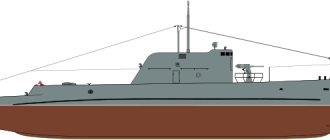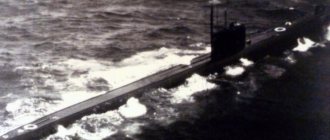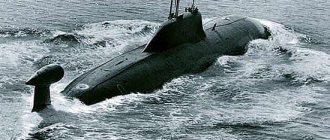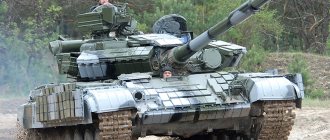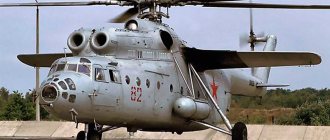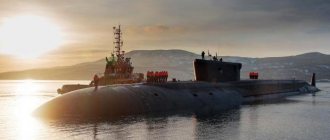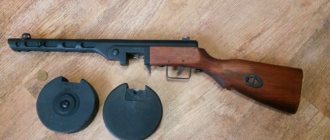On August 27, 2011, a test launch of the Bulava intercontinental ballistic missile was successfully carried out from the White Sea from the nuclear-powered missile carrier Yuri Dolgoruky. This was the second launch of the Bulava from Yuri Dolgoruky and the first launch of the rocket to its maximum range. The rocket flew the required 9.3 thousand kilometers and landed (or rather, splashed down) in a given area of the Pacific Ocean. This event coincided with another date: the Northern Fleet submarine division turned fifty years old.
In fact, this is an important, if not epoch-making, event. Russia received a new, formidable weapon. “Yuri Dolgoruky” is a submarine that belongs to the class of strategic submarines of the latest fourth generation, capable of carrying sixteen deadly nuclear missiles on board. It is the first, lead ship of Project 955, was laid down at the shipyard in Severodvinsk in 1996 and was launched in 2007. Following it, the same type “Vladimir Monomakh” and “Alexander Nevsky” have already entered service.
One of the most important and most dangerous components of the Russian “nuclear triad” for the enemy has finally received its long-awaited strengthening. In the coming years, three more Project 955 ships are expected to be launched: “Prince Vladimir”, “Prince Oleg” and “Generalissimo Suvorov”. In 2011, plans were announced to build eight submarines of this type by 2022, then information appeared in the media about the planned ten ships by 2022, but it has not yet been officially confirmed. Today, Yuri Dolgoruky is part of the Northern Fleet, and Vladimir Monomakh and Alexander Nevsky serve in the Far East. According to Sevmash management, the seventh and eighth submarines of Project 995 will be laid down in 2022.
Project 955 Borei submarines – video
The Project 955 Borei strategic missile submarine was developed at the Rubin Central Design Bureau (St. Petersburg), under the leadership of chief designer Vladimir Zdornov. The length of the nuclear submarine is 170 m. The maximum underwater displacement is 24 thousand tons. Submarine speed is up to 29 knots. Immersion depth - up to 400 m. Provision autonomy - 90 days. Crew - 107 people.
Borei-class submarine cruisers are being created to eventually replace submarines of projects 941 Akula (Typhoon according to NATO classification) and 667BDRM "Dolphin" (Delta-IV according to NATO classification).
Initially, the Borei series submarines were supposed to be armed with the new generation solid-fuel ballistic missile R-39UTTH "Bark", but after three consecutive unsuccessful test launches of the "Bark" and a disappointing assessment of the time period required to fine-tune the missile, the Ministry of Defense decided to develop new missile system D-19M for solid-fuel ballistic missiles R-30 "Bulava" (RSM-56). Starting in September 1998, the development of Project 955 to Project 09551 began.
In 2008, against the backdrop of unsuccessful Bulava launches, some experts proposed converting Project 955 Borei into cruise missiles.
On November 9, 2011, the media announced the signing of a contract between the Russian Ministry of Defense and the United Shipbuilding Corporation for the development of Project 955A Borei-M SSBNs (TsKBMT Rubin). The amount of the development contract is 39 billion rubles. The Borey-M project boats will differ from the base model by an even lower level of physical fields created by the ships and, therefore, increased secrecy compared to the Boreys, and even more advanced communication means, detection and control systems for on-board weapons. They will further improve crew habitability and survivability.
Design of Project 955 "Borey"
Starting from the late 1980s, the submarine was designed as a two-shaft SSBN, similar in design to the 667BDRM Dolphin project with a reduced height of missile launch silos for the Bark missile system. According to this project, the submarine with serial number 201 was laid down in 1996. In 1998, it was decided to abandon the Bark in favor of the Bulava with different dimensions, which led to the redesign of the submarine. At the same time, it became clear that the submarine could not be completed in a reasonable time in the conditions of reduced funding, the destruction of cooperative ties with subcontractor enterprises due to the collapse of the USSR and, in particular, the cessation of supplies of special grades of metal from the Zaporozhye Steel Plant. It was proposed to redesign the submarine under construction to also use the backlog of unfinished submarines of projects 971 “Shchuka-B” and 949A “Antey”.
According to the statement of the General Director of the Rubin Central Design Bureau A. A. Dyachkov, Project 955 submarines are 5 times less noisy than Project 971 Shchuka-B and Project 949A Antey submarines, which in turn, as it turned out, were much less noisier than American nuclear submarines.
The Borei are the first Russian nuclear submarines to be propelled by a single-shaft water-jet propulsion unit with high propulsion characteristics. (Taking into account the rather large energy intensity, especially specific, of ship nuclear power units, the use of water-jet propulsion systems on surface and underwater ships seems quite justified.) Also, similar to the Project 971 Shchuka-B submarine, the Borei submarine has two folding thrusters and retractable bow horizontal rudders with flaps.
Loading SLBM 3M30 “Bulava” onto SSBN K-535 “Yuri Dolgoruky” pr.955, Severodvinsk, 2010-2011.
Hydroacoustic weapons are represented by MGK-600B. “Irtysh-Amphora-B-055” is a single integrated automated digital sonar system, combining both the sonar itself (noise direction finding, echo direction finding, target classification, detection of GA signals, GA communications) and all hydroacoustic stations of “small acoustics” ( measuring ice thickness, measuring the speed of sound, searching for mines, searching for ice holes and floods, detecting torpedoes). It is expected that the range of this complex will exceed the SAC of the US Navy Virginia-class submarines.
The submarines of the project are equipped with a rescue system - a pop-up rescue chamber designed for the entire crew. The rescue chamber is located in the submarine hull behind the SLBM launchers. The submarines are also equipped with 5 life rafts of the KSU-600N-4 class.
Hatch for loading ammunition for torpedo tubes and SGAPD launcher covers on the SSBN K-535 “Yuri Dolgoruky” pr.955
Equipment
The submarine “Yuri Dolgoruky” uses the BIUS (combat information and control system) “Okrug” - in terms of capabilities of a class not lower than the BIUS “Omnibus” developed by the Morinformsystem “Agat” concern (TsNII “Agat”, used on the submarine pr.971), integrating real-time control of all combat systems, information about the state of the ship and information from surveillance and target designation equipment. The operation of the BIUS is provided by several on-board computers. The ship's BIUS can receive and transmit data to other ships via a secure underwater data transmission system.
GAK MGK-600B “Irtysh-Amphora-B” (“Irtysh-Amphora-Borey”) of a new generation developed by the Central Research Institute “Morfizpribor” (concern “Okeanpribor”, St. Petersburg, R&D 1980–1987, produced by Taganrog Priboi plant) consisting of:
- conformal large-sized main antenna “Amphora” with digital signal processing using digital libraries of the automatic target classification system “Ajax-M”; According to unconfirmed data, the Skat-3M sonar system is installed on the submarine pr.09551, and the use of the Irtysh-Amphora-B sonar is expected on the submarine pr.09552. GAS “Stak-3M” is a modified main antenna of GAS “Skat-3” (used on submarine pr.971) combined with the hardware and information part of the “Irtysh-Afmora-B” complex, including fiber-optic information transmission lines and a durable capsule with equipment for primary information processing.
- large area side conformal antennas;
- towed sonar antenna in the submarine's vertical tail fairing.
Composition of the SJSC SSBN pr.955:
1) Noise direction finding equipment in the audio frequency range and echo direction finding (hydrolocation) equipment;
- nasal conformal passive-active search and attack sonar, operating at medium and low frequencies;
- 2 x long-range onboard conformal antennas;
2) Equipment for detecting hydroacoustic signals from operating sonars (hydroacoustic reconnaissance) with a sonar system for detecting enemy sonar systems;
3) Protected underwater sound transmission system for tactical data similar to the “Structure” sound underwater communication equipment of OJSC “Okeanpribor” (or one of the models of this system). State identification equipment.
4) Noise direction finding equipment in the low audio frequency range using a towed extended antenna (similar to that used on the Gepard submarine pr.971, located in the fairing on the upper vertical rudder).
5) “Ajax-M” target classification equipment using a digital noise library (R&D since 1985, chief designer Yu.S. Perelmuter, Central Research Institute “Morfizpribor”).
6) Together with the SAC, the following GAS:
- Mine detection sonar of MG-70 class
- GAS for measuring the speed of sound in water of the “Zhgut-M” class
- GAS for determining the beginning of cavitation of propellers of the “Vint-M” class
- echometer type “Sever-M”
- ice break detector similar to NOR-1
- detector of polynyas in ice similar to NOK-1
SAC target detection range is more than 220-230 km (similar to Project 971)
The number of simultaneously tracked hydroacoustic targets is at least 30 (similar to Project 971)
The radar is more advanced than the Radian-U / SNOOP PAIR with the MRKP-59 PMU (a similar PMU is used on the Project 971 submarine).
Electronic warfare system of the Bukhta class of electronic warfare systems
State identification radar of the “Nichrom-M” class / AMBER LIGHT
Zone class direction finder / RIM HAT
Automated integrated control system for the technical means of the submarine “Bulat-B” / Bulat-Borey.”
Control system for the electric power system “Luga-B” / “Luga-Borey”.
Centralized power supply system “Cosine-B” / “Cosine-Borey”.
Navigation inertial complex - probably “Symphony-U” (or similar) with a “Scandium” gyro-corrector and on-board digital computer. The maximum storage time for navigation data to ensure the specified navigation accuracy is more than 7 days (in a submerged position without determining the location). One of the best results in terms of the accuracy of the NK operation was obtained in 2002 during the combat service of the K-295 submarine project 971 - in 6.5 days in a submerged position without determining the location, the position error of the submarine did not exceed 10 cable cables (1852 m). To target SLBMs, GUS is used to link coordinates to the prepared launch area.
The satellite navigation system is of a class no lower than “Synthesis”.
Automated radio communication complex consisting of:
- satellite communication system
- VHF radio station
- radio stations of other bands
Optical surveillance TV system of the MTK-110 class (allows optical observation at depths of up to 50-60 m). The commander’s periscope is no worse than the PZKE-21 “Swan” and the navigator’s astronavigation periscope is no worse than the “Signal-3”.
Frame
The project has a two-hull design. The durable body is probably made of steel with a yield strength of 100 kgf/sq.mm (thickness up to 48 mm). The hull is assembled using the block method: the submarine equipment is installed inside the hull on shock absorbers and in shock-absorbing blocks, which are part of the general structural system of two-stage depreciation (each block is isolated from the hull by rubber-cord pneumatic shock absorbers). The bow end of the wheelhouse fence is tilted forward to improve flow. The boat's hull is covered with a rubber anti-hydroacoustic coating. Active noise reduction measures are also likely used.
Withdrawal from the workshop of submarine K-535 “Yuri Dolgoruky” po.955, 04/15/2007
Power point
The boat is equipped with a nuclear power unit, probably with a VM-5 water-cooled thermal neutron reactor or a similar one with an OK-650V steam generator with a capacity of 190 MW. The PPU control and protection system is “Aliot”. The boats of the project are equipped with a 4th generation nuclear power unit - KTM-6.
For propulsion, a single-shaft steam block steam turbine unit PTU "Mirage" is used with a GTZA OK-9VM or similar with improved shock absorption with a power of about 50,000 hp. To improve maneuverability, the submarines are equipped with two thruster submersible two-speed propulsion electric motors PG-160 with a power of 410 hp each. (according to other sources - 370 hp). (Located in retractable columns in the aft part of the submarine.)
Transfer from the workshop to the floating dock of the submarine K-535 “Yuri Dolgoruky” po.955, 04/15/2007
Modifications
Project 955 "Borey-1" - SSBN for the D-31 missile system with 12 R-31 SLBMs. Design began in the mid-1980s.
Project 955 / 09550 "Borey" - SSBN for the D-19UTTH missile system with 12 "Bark" SLBMs. Design began in the late 1980s (1995 according to other data), development was stopped in 1998. The first boat laid down, K-535 “Yuri Dolgoruky” (serial number 201), was completed according to Project 09551.
Project 955 / 955(A) / 09551 “Borey” - SSBN for the D-30 missile system with 16 Bulava SLBMs. During construction, the backlog of submarines of projects 971 “Shchuka-B” and 949A “Antey” was used. Redesign began in September 1998 (completed in 1999). Three ships were laid down and built:
- K-535 “Yuri Dolgoruky”, (serial number 201)
- K-550 "Alexander Nevsky", (serial number 202)
- K-551 "Vladimir Monomakh", (serial number 203)
Project 955A / 955U / 955M / 09552 “Borey-A” - SSBN, for the D-30 missile system with 16 Bulava SLBMs. According to media reports, the Borey-A project boats will differ from the base model by a lower level of physical fields, respectively, better stealth, more advanced means of communication, detection and weapons control. They will have improved crew habitability and survivability. Initially, there was information in the media about 20 Bulava missiles in the boats of this improved project, but later it was refuted. The groundwork for the first Borey-A boat is being prepared at the Northern Engineering Enterprise during 2009; construction actually started on December 22, 2009. The official laying of the 1st Borey-A SSBN was postponed by the Russian Ministry of Defense to 2010 The boats will be built without using old hulls. It is on the Borei-A submarines that the full potential of the fourth generation nuclear submarine project will be used. Four ships were laid down:
- "Prince Vladimir" (serial number 204)
- "Prince Oleg" (serial number 205)
- "Generalissimo Suvorov" (serial number 206)
- "Emperor Alexander III" (serial number 207)
Representatives
4th generation strategic missile carriers are given names traditional for Russian 1st rank warships.
| Name | Project | Head No. | Bookmark | Launching | Start of testing | Transfer to the Navy | Fleet | State | Notes |
| K-535 "Yuri Dolgoruky" | 955(09551) | 201 | 02.11.1996 | 12.02.2008 | 19.06.2009 | 10.01.2013 | SF | In service | 09/09/2013 The nuclear submarine arrived at its permanent location at the Gadzhievo naval base in the Murmansk region |
| K-550 "Alexander Nevsky" | 955 | 202 | 19.03.2004 | 13.12.2010 | 24.10.2011 | 23.12.2013 | Pacific Fleet | In service | 09/30/2015 The nuclear submarine arrived at the place of permanent deployment in the closed city of Vilyuchinsk in Kamchatka |
| K-551 "Vladimir Monomakh" | 955 | 203 | 19.03.2006 | 30.12.2012 | 18.01.2013 | 10.12.2014 | Pacific Fleet | In service | 09.26.2016 The nuclear submarine arrived at its permanent location in the closed administrative town of Vilyuchinsk in Kamchatka |
| "Prince Vladimir" | 955A(09552) | 204 | 30.07.2012 | 17.11.2017 | 2019 | SF | Under construction | Passes factory and state tests. | |
| "Prince Oleg" | 955A | 205 | 27.07.2014 | 12.2019 | SF | Under construction | Hydraulic tests completed | ||
| "Generalissimo Suvorov" | 955A | 206 | 26.12.2014 | 12.2020 | Pacific Fleet | Under construction | By the end of 2015, a strong body will be formed | ||
| "Emperor Alexander III" | 955A | 207 | 18.12.2015 | 12.2020 | Pacific Fleet | Under construction | Pawned. | ||
| "Prince Pozharsky" | 955A | 208 | 23.12.2016 | 11.2021 | SF | Under construction | Pawned. | ||
| n/a | 955A | n/a | 2023 | 2026 | n/a | Planned | The Borei-A project is included in the state weapons program | ||
| n/a | 955A | n/a | — | n/a | Planned | ||||
| n/a | 955A | n/a | — | n/a | Planned | ||||
| n/a | 955A | n/a | — | n/a | Planned | ||||
| n/a | 955A | n/a | — | n/a | Planned | ||||
| n/a | 955A | n/a | — | n/a | Planned |
Table colors:
White -
under construction
Green -
operating as part of the Navy
Construction
Initially, delays in the construction of ships in the series were due to insufficient funding, later added by a lack of qualified production workers. In addition, state tests of the first ship coincided with failures among the developers of the main weapon, the Bulava missile system. By 2013, the situation had changed for the better - the Bulava simply suffered from typical “childhood diseases,” as quite often happens with any new technology. (At the beginning, the Su-24 also suffered from “childhood diseases” - 6 accidents occurred with the experimental and earliest production aircraft, including the death of pilots, while at present they are one of the most reliable tactical bombers.) Funding has reached a sufficient level. The work of Sevmash itself has also returned to a normal rhythm. However, delays remained, due to the fault of second- and third-tier suppliers, where new orders (financing) only began to solve the problems that had accumulated over the years of downtime.
The second submarine cruiser (also the first production one) “Alexander Nevsky” was laid down on March 19, 2004. On December 6, 2010 it was launched. On October 22, 2011, the boat began sea trials. On May 2, 2012, “Alexander Nevsky” was delivered to workshop No. 55 of the Sevmash Production Association to carry out preparatory work for the next sea trials. On October 1, 2012, the Alexander Nevsky SSBN in the White Sea successfully passed the next stage of factory sea trials, after which state tests of the submarine will begin. February 4, 2013 - the media stated that the Alexander Nevsky nuclear submarine has currently passed 30% of state tests and after the successful summer launch of the Bulava SLBM in August-September 2013 can be accepted by the Navy. The first launch took place on September 6, 2013 in the White Sea and ended unsuccessfully. However, there were no complaints about the performance of the submarine itself. On November 8, 2013, the nuclear submarine Alexander Nevsky completed state tests. On December 23, 2013, the K-550 SSBN "Alexander Nevsky" was accepted by the fleet.
Withdrawal from workshop No. 55 of the Sevmash Production Association SSBN K-550 “Alexander Nevsky” pr.955, 12/01/2010
During the construction of the first two SSBNs “Yuri Dolgoruky” and “Alexander Nevsky”, sections of unfinished and dismantled hulls of submarines of projects 971 “Pike-B” (K-133 “Lynx” and K-137 “Cougar”) and 949A “Antey” were used. (K-135 "Volgograd" and K-160 "Barnaul").
On March 19, 2006, on the day of the centenary of the Russian submarine fleet, the laying ceremony of the third Borei class nuclear submarine, Vladimir Monomakh, was held at Sevmashpredpriyatiya. On December 30, 2012, the boat was removed from the workshop for subsequent launching. On January 18, 2013, it was removed from the floating dock and mooring tests began. On July 7, 2014, factory tests were completed, on July 25, 2014 - the first stage of state tests. On December 19, 2014, the St. Andrew's flag was raised on the submarine.
Ceremony of withdrawal from the workshop of the SSBN “Alexander Nevsky” pr.955 “Borey”
Work on the construction of the fourth Borei-class nuclear submarine began in December 2009. The ship is named "Prince Vladimir" (originally the name "St. Nicholas" was intended). It will be built in the 955U or 955A modification. Initially, there was information in the media that the number of missile silos in the Borey-A project boats would be increased to 20. But on February 20, 2013, this information was refuted. The official groundbreaking ceremony took place on July 30, 2012. As of February 19, 2014, the main hull of the submarine was formed and tested. The main task for 2014 is the installation of equipment supplied from supplier factories.
The fifth boat “Prince Oleg” and the sixth “Generalissimo Suvorov” were laid down on July 27 and December 26, 2014, respectively, under the “Borey-A” project.
On December 18, 2015, the seventh boat of the series, “Emperor Alexander III,” was laid down.
The last, eighth boat of the series is planned to be laid down in July 2016.
Ceremony for the withdrawal of the Vladimir Monomakh SSBN from the workshop. Workshop No. 55 of Sevmash Production Association, December 30, 2012
First combat submarine
But a century and a half passed, full of failures (Nikonov’s failed project in 1720) and tragedies (the sinking of the Englishman Day’s submarine with its inventor in 1770) before another war again pushed human thought to the creation of submarines.
1776: American David Bushnell invented his famous turtle submarine, and his companion Ezra Lee launched the world's first attempt at an underwater mine attack on an enemy (English) fleet in New York Harbor. The submarine failed to cope with its combat mission, but it was in the “Turtle” that the main technological foundations that were developed in the designs of the future were laid:
- conning tower;
- ballast tank;
- screw engine at the stern;
- pressure gauge to determine the submersion depth of a submarine.
In addition to inventing the submarine, Bushnell made another discovery: he proved that gunpowder could explode even under water. Due to the weakness of the powder charge ─ real mines required more powerful explosives ─ the first “mine war” ended in the defeat of the submarines.
After the loss of the first submarine, underwater attacks by the stubborn Bushnell's men (the designer himself did not take risks) continued until 1778. The mines from the first submarine could not do anything to the copper plating of wooden ships, and their accuracy was poor. As a result, the “Turtle” managed to accidentally (instead of a frigate) sink a barge.
For the first time, provision was made for an air supply on board. Contemporaries assessed the design as “too complex” (although the propellers were rotated by the muscular strength of the crew) and the project did not take place.
Further, the development of combat submarines (spurred by the continuous wars of the 19th century) went like an avalanche:
- 1800 ─ Fulton creates an all-metal (copper-hulled) Nautilus;
- 1810 ─ muscle-powered submarine from the Kössan brothers;
- 1834 ─ design of a submarine by General Schilder, armed with a mortar (information has not survived);
- 1860s ─ projects by Alexandrov, Spiridonov, type of propulsion ─ “jet”, due to the ejection of compressed air from gas tanks placed on board;
- 1861 ─ American Frenchman Villeroy builds the underwater “cigar ship” Alligator in Philadelphia. The design served as the prototype for the Confederate submarine HorusHunley, who added ballast tanks to the design as in Bushnell's design;
- 1864 ─ the first successful combat use of a submarine: Confederate Lieutenant Dixon, using a mine attached on a pole to the bow of the Hunley-Villeroy submarine, sinks the flagship of the Yankee squadron blockading Charleston. The submarine dies along with its crew;
- 1879 ─ the world's first project of an electric underwater vessel designed by S. Dzhavetsky with batteries.
Chronologically, the first combat submarine was the “Turtle”, and according to the actual result, the “Alligator” by Confederate Lieutenant Dixon, designed by H. Hanley.
Since the beginning of the First World War, submarines have become a formidable weapon for the warring parties. The submarine fleet developed particularly rapidly during World War II and at the height of the Cold War.
With the advent of nuclear reactors, the autonomy of submarines increases many times over. In one of V. Vysotsky’s songs there are the words: “we can not care about the weather for a year.” In the sense that a submarine may not surface for a year. The power of weapons is also increasing, turning submarines into a powerful instrument of nuclear apocalypse.
Adoption
The Russian Navy accepted 3 ships of Project 955 - “Yuri Dolgoruky”, “Alexander Nevsky” and “Vladimir Monomakh”.
The lead ship was accepted on January 10, 2013. The submarine cruiser "Yuri Dolgoruky" is assigned to the 31st submarine division of the Northern Fleet, based in Gadzhievo.
Acceptance of the second ship (the first production ship) took place on December 23, 2013. The submarine cruiser "Alexander Nevsky" is assigned to the 25th submarine division of the Pacific Fleet, based in Vilyuchinsk.
The acceptance of the third ship (the second production ship) took place on December 10, 2014. The submarine cruiser "Vladimir Monomakh" is assigned to the 25th submarine division of the Pacific Fleet, based in Vilyuchinsk.
According to plans for the modernization of the Russian submarine fleet, the 955 Borei SSBN will become one of four types of submarines put into service. One of the features of the Soviet and Russian submarine fleet was the use of dozens of different types and modifications of submarines, which significantly complicated their operation and ship repair.
Notes
- ↑ Alexander Emelyanenkov.
. "Rossiyskaya Gazeta" - Week No. 4739 (September 28, 2008). Retrieved October 19, 2009. - (February 13, 2008). Retrieved October 19, 2009.
- ↑
- ↑. RIA News. (February 20, 2013).
- Oleg Leonidovich Sergeev.
. Independent Military Review (January 25, 2008). Retrieved November 13, 2011. - ↑
- . iz.ru.
_ Izvestia (April 17, 2019). Retrieved April 18, 2022. - . TASS. Retrieved June 27, 2022.
- Pilikina, Ekaterina
. Sevmash (February 10, 2010). Retrieved February 22, 2010. - Gennady Nechaev.
. Look (February 15, 2008). Retrieved October 19, 2009. - . Sevmash (January 10, 2013).
- (unavailable link). USC (November 8, 2013).
- ↑. Sevmash (December 23, 2013).
- Pilikina, Ekaterina
. Sevmash (December 30, 2012). Retrieved July 23, 2014. - . lenta.ru (January 18, 2013). Retrieved January 19, 2013.
- . Sevmash (July 9, 2014). Retrieved July 14, 2014.
- . Sevmash (July 25, 2014). Retrieved July 26, 2014.
- . RIA Novosti (February 8, 2010). Retrieved February 9, 2010.
- . ARMS-TASS, (August 24, 2009). Retrieved October 19, 2009.
- . RIA News. (March 3, 2010). Retrieved March 12, 2010.
- . Murmansk Bulletin (March 10, 2012). Retrieved March 11, 2012.
- Alexey Ramm, Alexey Kozachenko, Bogdan Stepovoy.
. iz.ru (May 13, 2019). Retrieved May 13, 2022. - ↑. ITAR-TASS (July 27, 2014). Retrieved July 27, 2014.
- ↑. ITAR-TASS (December 26, 2014). Retrieved December 26, 2014.
- ↑. Retrieved December 18, 2015.
- . sevmash.ru. Retrieved December 23, 2016.
- . KM.RU (January 10, 2013). Retrieved December 20, 2014.
- . lenta.ru (January 11, 2013). Retrieved January 12, 2013.
- . RIA News. (December 23, 2013).
- ↑. RIA Novosti (December 10, 2014). Retrieved December 20, 2014.
- Starozhilov, Mikhail
(March 23, 2006). Retrieved February 22, 2010. - . russianships.info. Retrieved December 5, 2015.
- ↑. RIA Novosti (20191129T0313+0300). Retrieved November 29, 2019.
- . Independent online publication “DNI24”. Retrieved June 27, 2019.
Tactical and technical characteristics of the project 955 "Borey"
Project developer……………..CDB MT “Rubin” Chief designer……………..V. A. Zdornov Speed (surface)……………..15 knots Speed (underwater)……………..29 knots Operating diving depth……………..400 m Maximum diving depth……………. .480 m Navigation autonomy……………..90 days Crew……………..107 people, including 55 officers Cost……………..$713 million (first ship), 23 billion rubles
Dimensions Displacement above water……………..14,720 t Displacement underwater………..24,000 t Maximum length (according to waterline)……………..170 m Maximum width of hull………………13 .5 m Average draft (according to water line)……………..10 m
Power plant………OK-650V 190 MW; PTU with GTZA; propeller shaft; water jet propulsion
Armament Torpedo and mine weapons…………6TAx533mm + 6SGAPDx324mm, torpedoes, torpedo missiles, cruise missiles. Missile weapons………..16 launchers of the D-30 complex, SLBM R-30 “Bulava” Number of missiles…………..16 (project 955), 16 (project 955A)
Comparative assessment
According to the American magazine “The National Interest”, nuclear submarines of projects 955 “Borey”, 667BDRM “Dolphin”, 885M “Yasen-M” are among the TOP 5 most deadly and powerful submarines in the world, capable of completely destroying all of humanity in a matter of minutes .
| 941 "Shark" | "Ohio" | 667BDRM "Dolphin" | "Vanguard" | "Triumfan" | 955 "Borey" | |
| Appearance | ||||||
| Years of construction | — | — | — | — | — | - (plan) |
| Years of service | —present | —present | —present | —present | —present | —present |
| Built | 4 | 4 | ||||
| Displacement (t)surface / submerged | 23 200 / 48 000 | 16 746 / 18 750 | 11 740 / 18 200 | 15 130 / 15 900 | 12 640 / 14 335 | 14 720 / 24 000 |
| Number of missiles | 24 Trident II | 16 R-29RMU2 | 16 Trident II | 16 M45 | 16 "Mace" | |
| Throwing weight (kg) | 2550 | 2800 — ? | 2800 — ? | 2800 — ? | ? | 1150 |
| range (km) | 9300 | 7400 — 11300 | 8300 — 11547 | 7400 — 11300 | 6000 | 9300 |
Submarines of project 955 "Borey" - photo
Photo of the launch of the 3M30 “Bulava” SLBM from the SSBN Project 955 “Borey”
SSBN “Yuri Dolgoruky” with an ICU device leaves for testing from the Nikolsky mouth to the White Sea, 07/28/2010.
Source
